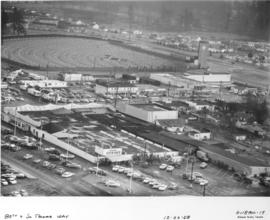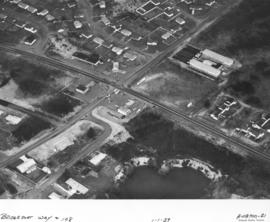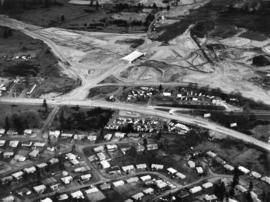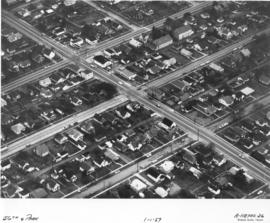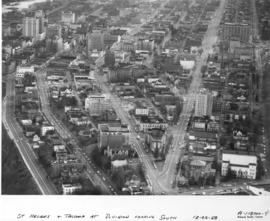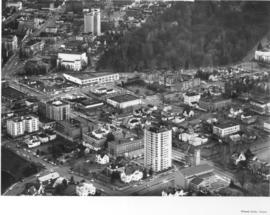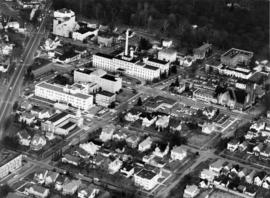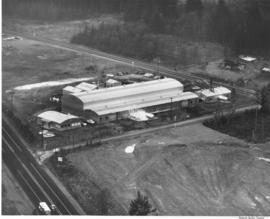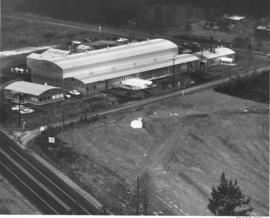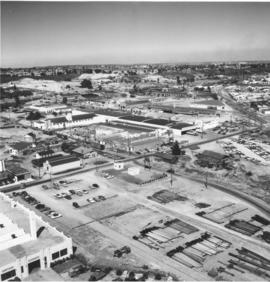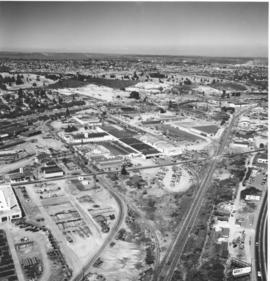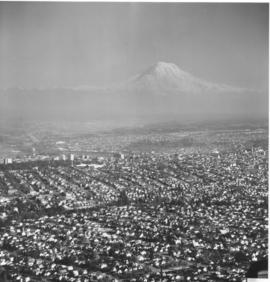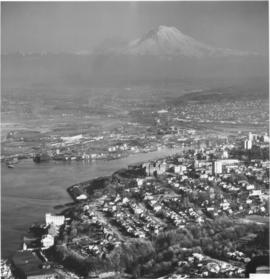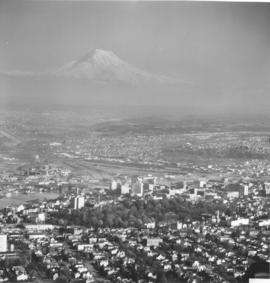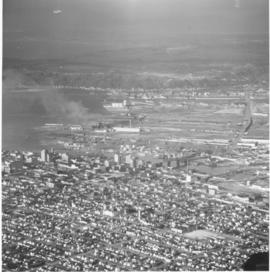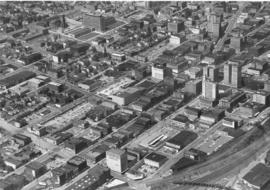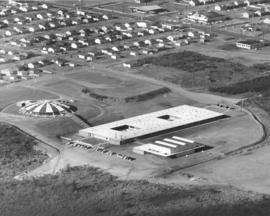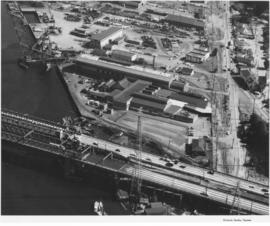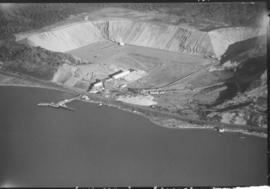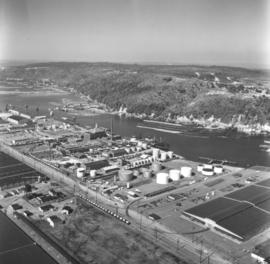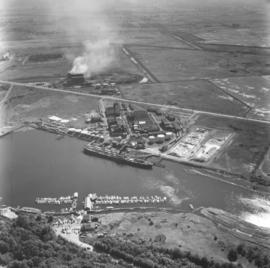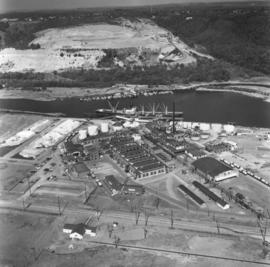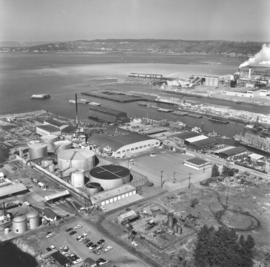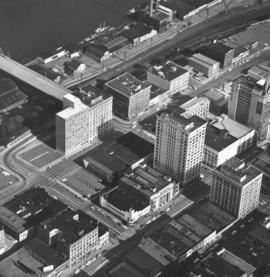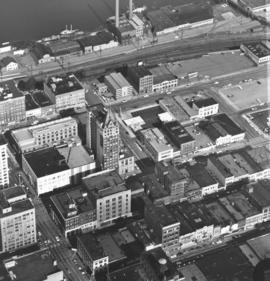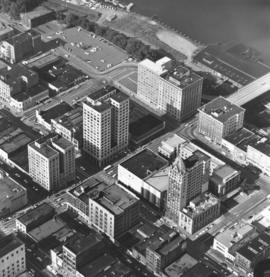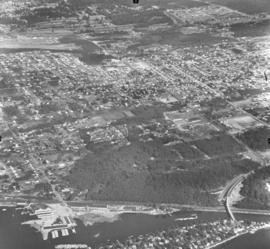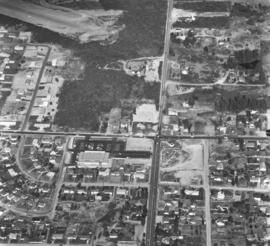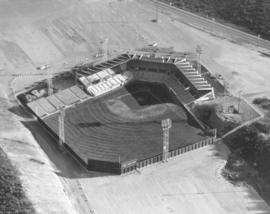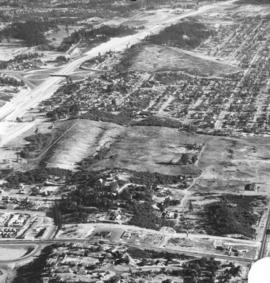- Item
- 1958-12-22
Part of Richards Studio Photographs
This aerial photographs of the area around South 80th & South Tacoma Way, close to Tacoma's city limits, was taken in December of 1958. Before I-5 was built, South Tacoma Way was part of highway 99. It was a major thoroughfare and businesses located along it had excellent exposure to traffic. South Tacoma Way was known for its many car lots and for such attractions as the B & I shopping center and the Star-Lite Drive-In, both pictured above. The Star-Lite, built in 1948, was one of the world's largest outdoor theaters. It was built with a 39 by 54 foot screen with over three acres of parking. The B&I was originally built in 1946 and as it grew over time it became known as the "biggest little store in the world." Owner E.L. Irwin advertised heavily and was instrumental in bringing celebrities such as Duncan Renaldo ("The Cisco Kid") and boxers Max Baer and Joe Louis to town.
Aerial photographs; Neighborhoods--Tacoma--1950-1960; Star-Lite Park In Theatre (Tacoma); B&I Circus Store (Tacoma);
